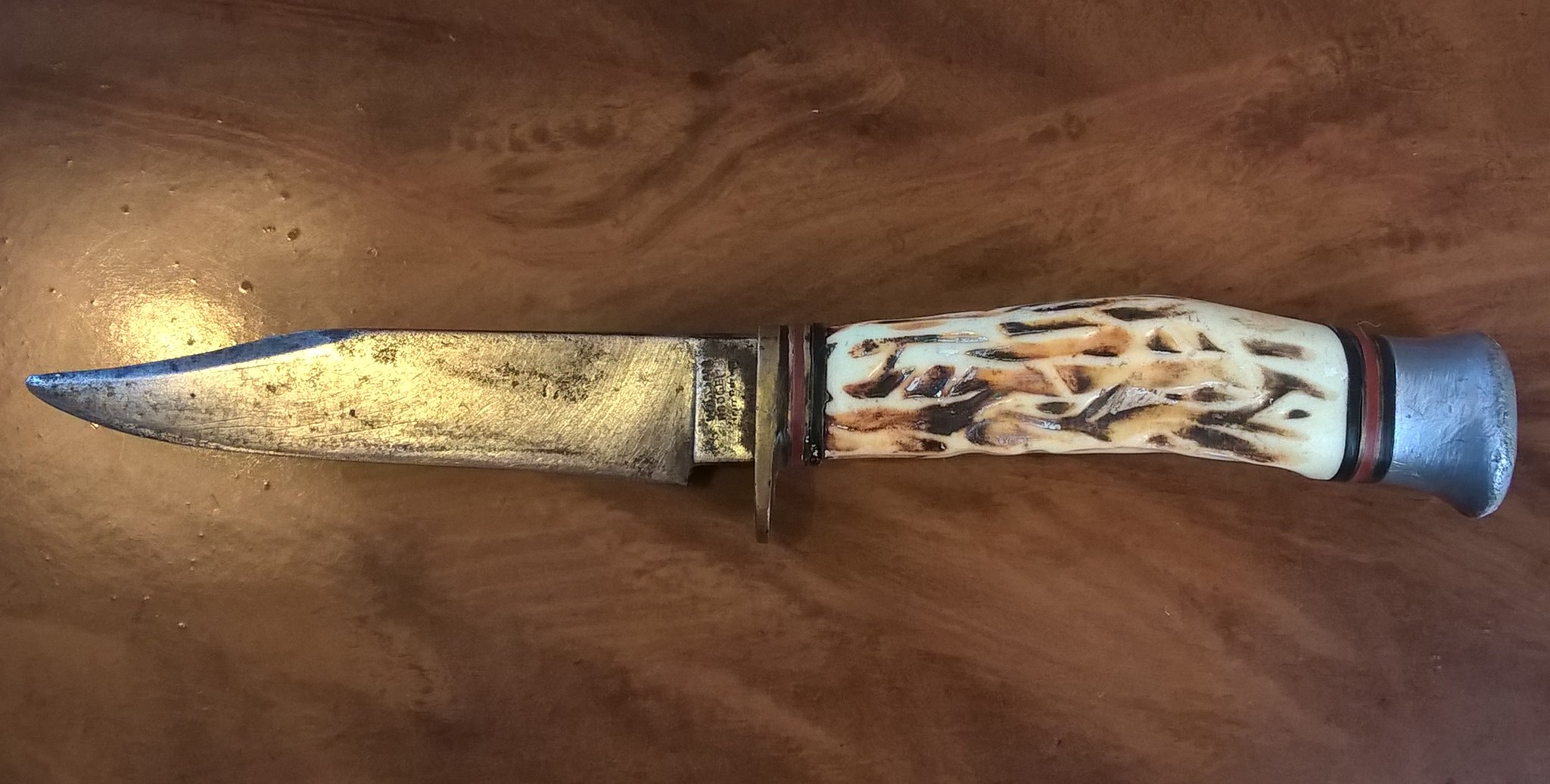Congratulations on getting hold of your Grandfather's sheath knife Blake :thumbup:
Sheffield cutlers would call your knife a 'Whittle-tang Bowie', and it is one of the 'Town Patterns' (the patterns produced by many different cutlers). Knives like this, and similar patterns have been produced, by the hundreds of thousands, in Sheffield for many years, and are still made today, usually either with handles of stag or of stacked leather washers. They come with blades of various lengths (eg 3", 4", 5", 6"). When I was young, virtually every boy owned at least one such knife, and many of us carried them regularly. I had several, including at least one by William Rodgers (note the inclusion of the 'd'). They were known simply as sheath knives, or as 'Scout Knives', which indicates their primary market. The Boy Scout movement was absolutely huge at one time, and tens of thousands of these simple sheath knives were made for Scout troops. The design of the knife was almost certainly based on American patterns, such as those designed by Webster Marble.
The famous 'I Cut My Way' mark originally belonged to a a Sheffield cutler called Thomas Hobson, who operated in the late 19th century. It was acquired by John Clarke & Son before WW1. Clarke had set up in business in the mid 19th century, and as well as a cutler and factor, he also helped recruit Sheffield cutlers to go to work in America. After acquiring the 'I Cut My Way' mark, they used it in conjunction with the name 'William Rodgers' (though I have seen Clarke knives also marked with it), and this became a 'stand alone' brand for them. The choice of name was clearly an attempt to confuse buyers into thinking there was an association with the much more famous and prestigious Joseph Rodgers firm, and even today, people commonly think the two firms were related.
While Clarke's went under in the 1960's, their mark (and the William Rodgers mark) is today owned by the Eggington group of companies.
As for your knife, assuming the handle is stag (and it may not be), the dogleg design is simply the shape of the material. What were such knives used for? In my experience, making bows and arrows, playing 'splits', sharpening tent-stakes, and stalking whatever imaginary foe the woods conjured up that day. When it came to more delicate camp chores, they weren't really the best design. Because of the huge numbers produced, they are very common, and I see them regularly on market stalls and at car-boot sales (swap meets). I would expect to pay around a fiver for a knife like that, but I'm sure you consider it priceless, as indeed you should :thumbup:
 Untitled by Mark Saunders, on Flickr
Untitled by Mark Saunders, on Flickr Untitled by Mark Saunders, on Flickr
Untitled by Mark Saunders, on Flickr Untitled by Mark Saunders, on Flickr
Untitled by Mark Saunders, on Flickr Untitled by Mark Saunders, on Flickr
Untitled by Mark Saunders, on Flickr

